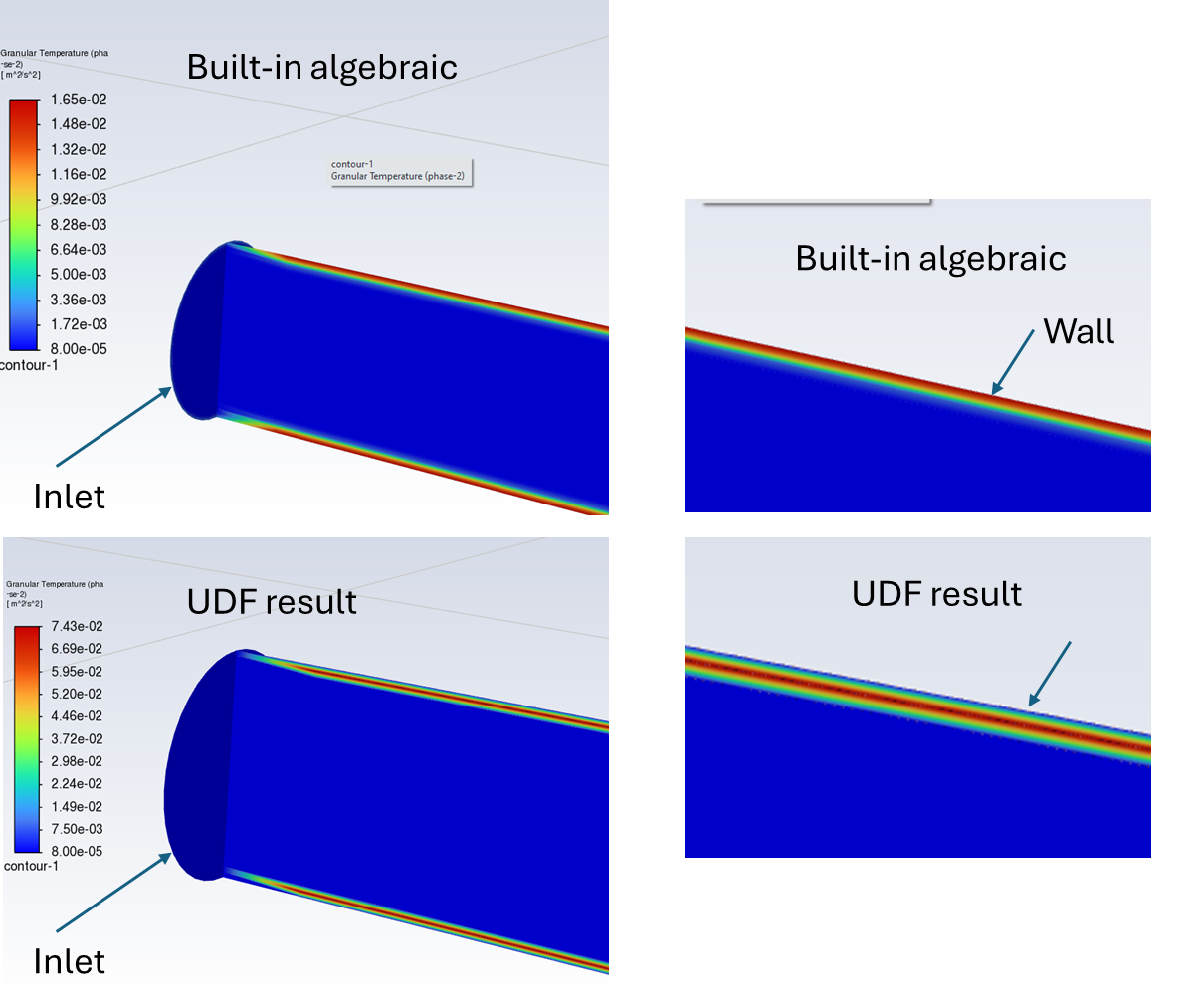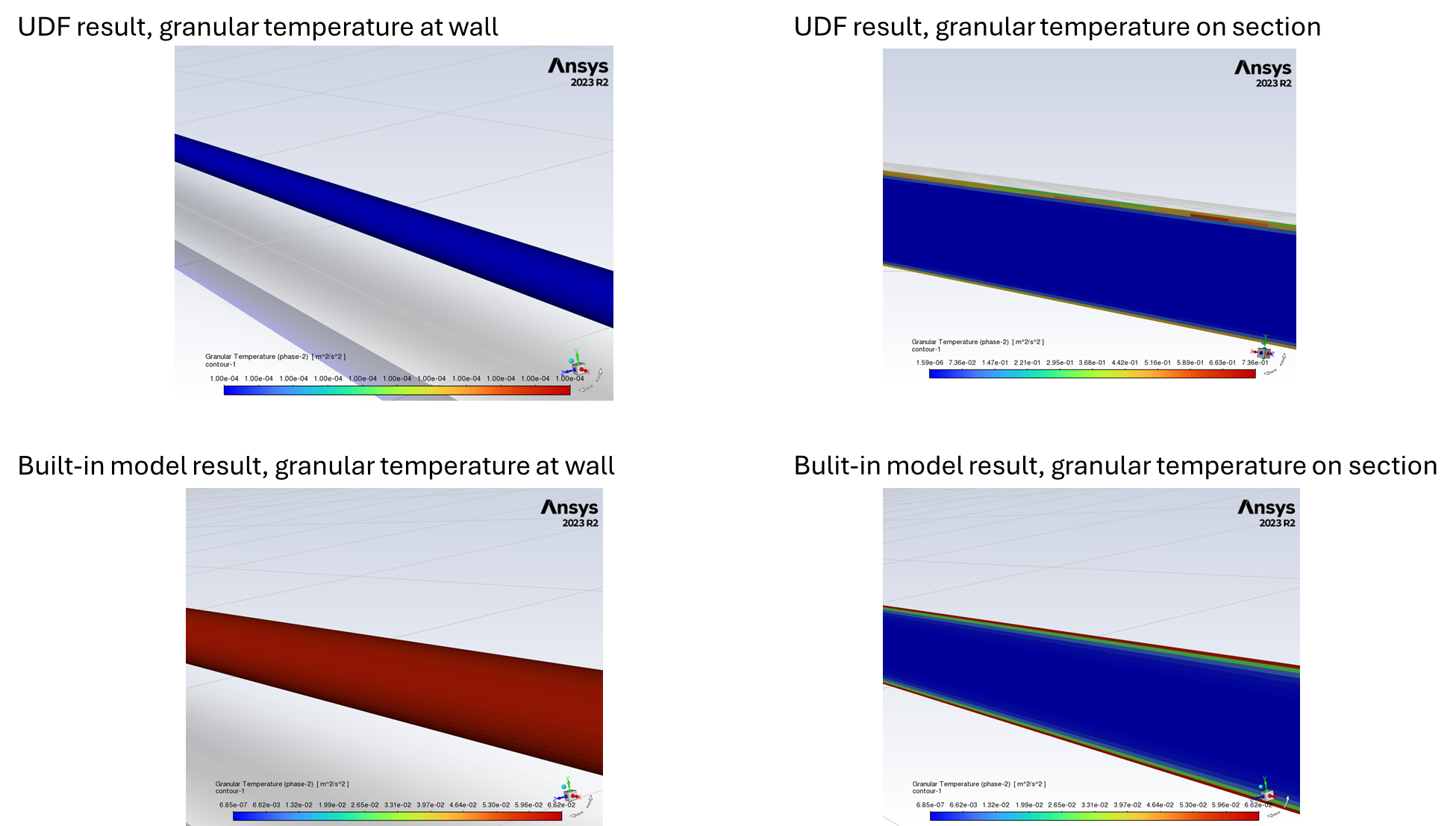-
-
February 23, 2025 at 10:18 pm
30067861
SubscriberHello everyone,
I am trying to implement my own UDF to compute the granular temperature based on the algebraic formulation in Fluent. As a first step, I attempted to replicate the built-in algebraic model using my UDF. However, I encountered an issue:
When using my UDF, the granular temperature at the wall boundaries remains at its initial value and does not update during the simulation. In contrast, when using Fluent's built-in algebraic formulation, the wall granular temperature is iteratively updated, seemingly applying an internal zero-gradient boundary condition (as shown in the attached image).
One possible reason for this issue is that my UDF is currently implemented using
DEFINE_PROPERTY(custom_granular_temperature, cell, thread), which appears to only compute granular temperature within the fluid domain and does not account for wall boundary cells.(see the figure of the result of the pipe flow for a granular Eulerian two phase flow )Does anyone know how to properly handle the granular temperature at the wall boundary in a UDF? Is there a way to apply a zero-gradient boundary condition similar to Fluent's built-in model? Any suggestions would be greatly appreciated. Btw, glad to share my UDF for discussion if it is required.

-
February 24, 2025 at 10:25 am
Rob
Forum ModeratorAre you displaying the property in the second image? Replot with node values off to see if that's a factor. Otherwise it may be a missing term for wall effects?
-
February 24, 2025 at 10:09 pm
30067861
SubscriberHi Rob
Thanks so much for your suggestion. I tried replotting the results with the "Node Values" turned off,, and now the near-wall cells display the correct values.. Although the temperature results of UDF at the wall is different from the built-in model, this may don't influence the result in the fluid cell zone.
However, as you can see from the comparison plot, the convergence and stability of my UDF-calculated granular temperature still lag behind the built-in model. My current approach involves setting a relaxation factor and limiting the maximum value of the computed temperature. Do you have any suggestions for improving the convergence and stability of the result?
-
February 25, 2025 at 2:25 pm
Rob
Forum ModeratorIt's a material property so if you're needing to relax values then is there something else missing in the UDF? If you run with the Fluent model but use your UDF to calculate the granular temperature inside a UDM how does it look?
-
February 25, 2025 at 9:41 pm
30067861
SubscriberMuch appreciate! I will give it a try.
-
- You must be logged in to reply to this topic.



-
2918
-
970
-
852
-
599
-
591

© 2025 Copyright ANSYS, Inc. All rights reserved.






